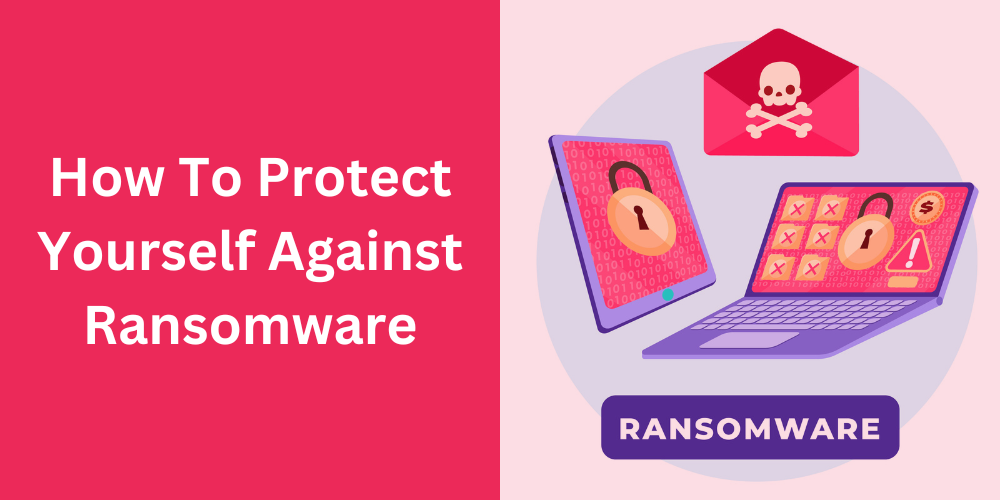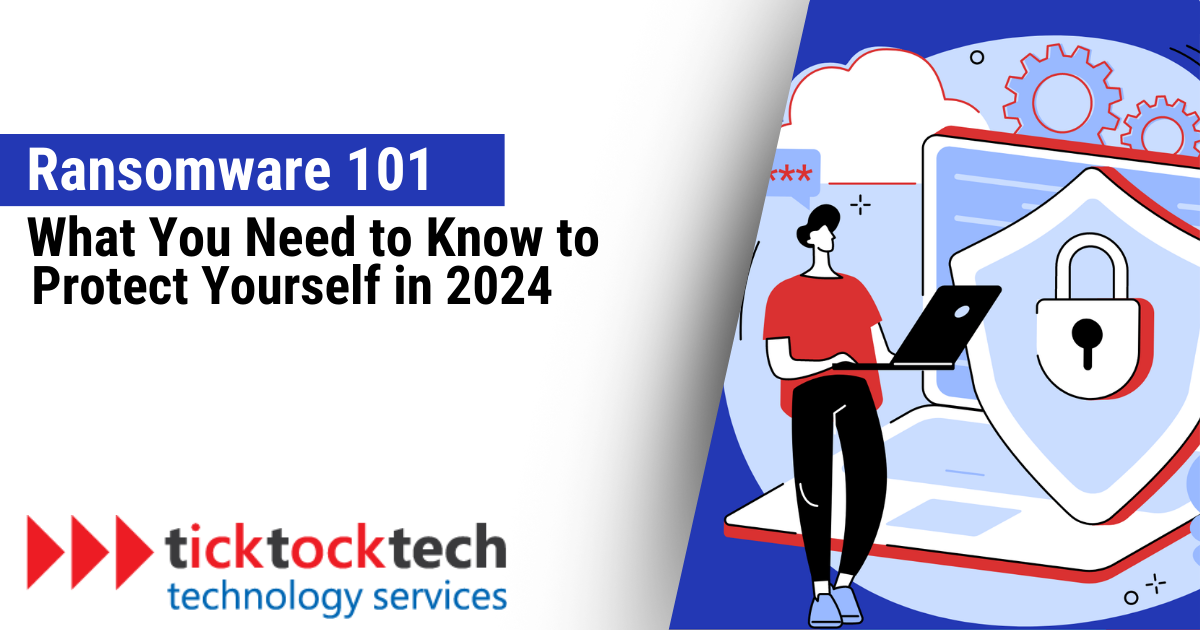Ransomware has become a significant threat in the digital world. It can wreak havoc on individuals, businesses, and even governments. In this article, we’ll explore what ransomware is, what causes ransomware attacks, and how to protect yourself against ransomware.
What is Ransomware in simple words?
Imagine opening your computer one morning, only to find that all your files have been encrypted, and a message demanding payment in exchange for the decryption key. This is the reality of ransomware, a type of malware that has become increasingly common in recent years.
Ransomware, in simple terms, is a type of malicious software designed to encrypt your files and hold them hostage until a ransom is paid. It is a form of cyber-extortion that aims to exploit people by denying them access to their own data. The attackers then demand payment in exchange for the decryption key to regain access. The payment is usually demanded in cryptocurrency, making it difficult for law enforcement to trace the transaction.
Types of Ransomware
Ransomware can take many forms, with the goal being to lock you out of your system and demand payment in exchange for access to your files. Some ransomware can also move laterally across networks, encrypt data, or even destroy it.
There are different types of ransomware, each with its unique characteristics. Some of the most notorious ones include:
- WannaCry: This remains one of the most popular ransomware attacks in history, affecting over 300,000 victims in 150 countries. The attack is believed to have been carried out by a programmer associated with the North Korean regime.
- Locky: This ransomware was popular in 2016 and was also spread through phishing emails. It was known for encrypting files and demanding payment in Bitcoin.
- REvil: This ransomware family was responsible for encrypting the networks of many high-profile organizations in 2021. It’s known for its sophisticated techniques and ability to evade detection.
- Conti: This ransomware is similar to REvil and combines encryption with threats to publish data to extort ransom payments. It’s been responsible for many high-profile attacks, including ones on healthcare services and hospitals.
- Cerber: This was one of the first ‘Ransomware-as-a-Service’ (RaaS) models, allowing users without technical expertise to conduct attacks in exchange for a share of the profits.
What causes Ransomware attacks?
Understanding the causes behind ransomware attacks is crucial in protecting yourself. Here are some common causes of ransomware attacks:
1. Phishing Emails
One of the primary methods cybercriminals use to distribute ransomware is through phishing emails. They send deceptive emails that appear to come from legitimate sources, like banks or well-known companies. These emails often contain malicious attachments or links. When you open the attachment or click on the link, the ransomware is downloaded and executed on your device.
2. Exploit Kits
Cybercriminals use exploit kits. These toolkits are structured to exploit vulnerabilities in software or operating systems. They take advantage of security weaknesses in outdated or unpatched software. Attackers often use tactics like malvertising or compromised websites to redirect you to servers hosting exploit kits. If your system has a vulnerability, the exploit kit delivers the ransomware payload.
3. RDP Attacks
Remote Desktop Protocol (RDP) is a feature that allows users to connect to a remote computer or network. If attackers gain unauthorized access to a system with weak or compromised RDP credentials, they can use it as a gateway to introduce ransomware. Weak passwords, brute-force attacks, or stolen credentials obtained from data breaches may be exploited. Once inside the system, the attackers deploy the ransomware and encrypt your files.
It’s important to note that ransomware attacks evolve continually, and attackers adapt their tactics to exploit new vulnerabilities. To defend against this, it is crucial to stay protected.
How To Protect Yourself Against Ransomware

Protecting yourself against ransomware requires implementing the right digital security measures and being aware of potential threats. Here are protective measures you can take to safeguard your data:
1. Software and Operating systems update
Regularly update your devices’ operating systems and applications. Software updates often include security patches that protect against newly discovered vulnerabilities.
2. Back up your files securely
Create backups of your important files and store them in secure locations. Consider keeping multiple copies of your data in different places, including on-premises hard drives that ransomware cannot easily reach. Retain older backups even if restoring data from them may be inconvenient.
3. Use MFA
Enable multi-factor authentication (MFA) for your sensitive accounts. This adds an extra layer of protection by requiring verification through an additional method, such as a one-time-use code or biometrics. Opt for using an authentication app instead of relying on SMS, as it reduces the risk of SIM-swapping attacks.
4. Recognize phishing attacks
Educate yourself about the warning signs of phishing attacks, which are commonly used to deliver ransomware. Be cautious of unsolicited messages, especially those that create a sense of urgency or impersonate trusted organizations.
5. Use antivirus or anti-malware software
Install reputable antivirus app(s) on all your devices. These programs scan files and applications for known threat indicators, helping to detect and prevent ransomware infections.
6. Use a virtual private network (VPN) on public Wi-Fi networks
When connecting to public Wi-Fi networks, employ a VPN to encrypt the data you transmit. This reduces the risk of hackers intercepting your data or injecting malware into your device. However, note that a VPN does not directly prevent ransomware from operating on your device, so exercise caution when downloading files.
7. Minimize personal information online
Review your online presence and remove personal or sensitive information that could be used against you. Avoid posting pictures of sensitive documents, and pay attention to what your friends and family members share about you online.
Frequently Asked Questions
Conclusion
Ransomware attacks are on the rise, so it’s crucial to understand the threat and take action to protect yourself. Be cautious of phishing emails, update your software, back up your files, use extra verification for your accounts, and install an antivirus program. By implementing these preventive measures, you can significantly reduce the risk of falling victim to ransomware and safeguard your digital assets.
In addition to these preventive measures, it’s essential to have access to reliable virus removal services in the event of a ransomware attack. TickTockTech offers fast virus removal services to help you eliminate ransomware and other malware you may be experiencing. By leveraging expert assistance, you can ensure thorough and secure protection against these malicious attacks. Contact TickTockTech at (888) 958-7032 to get protected today!

